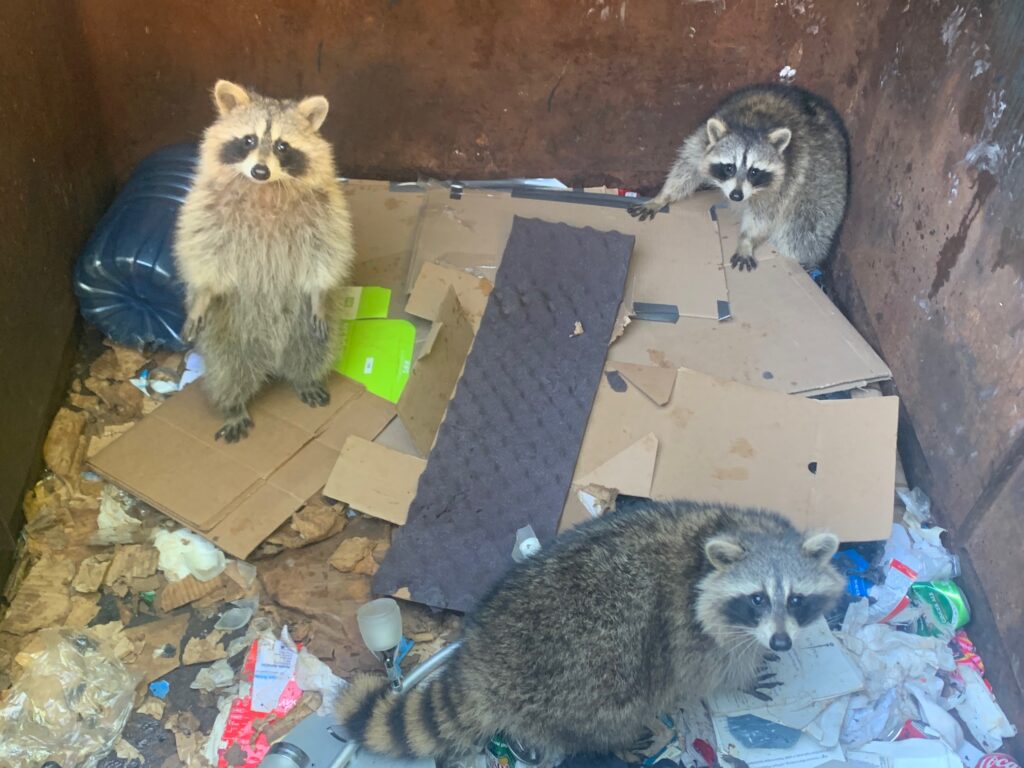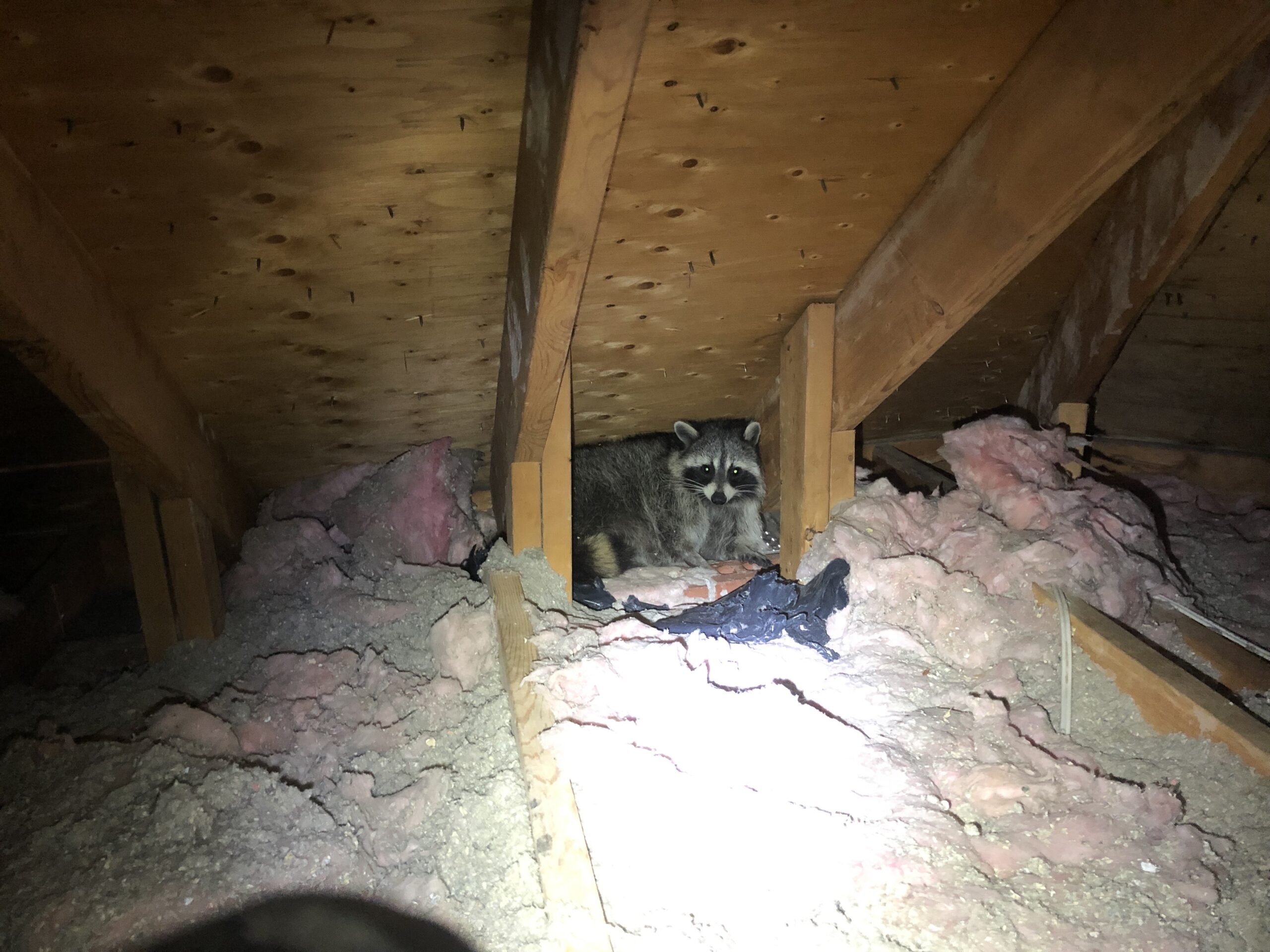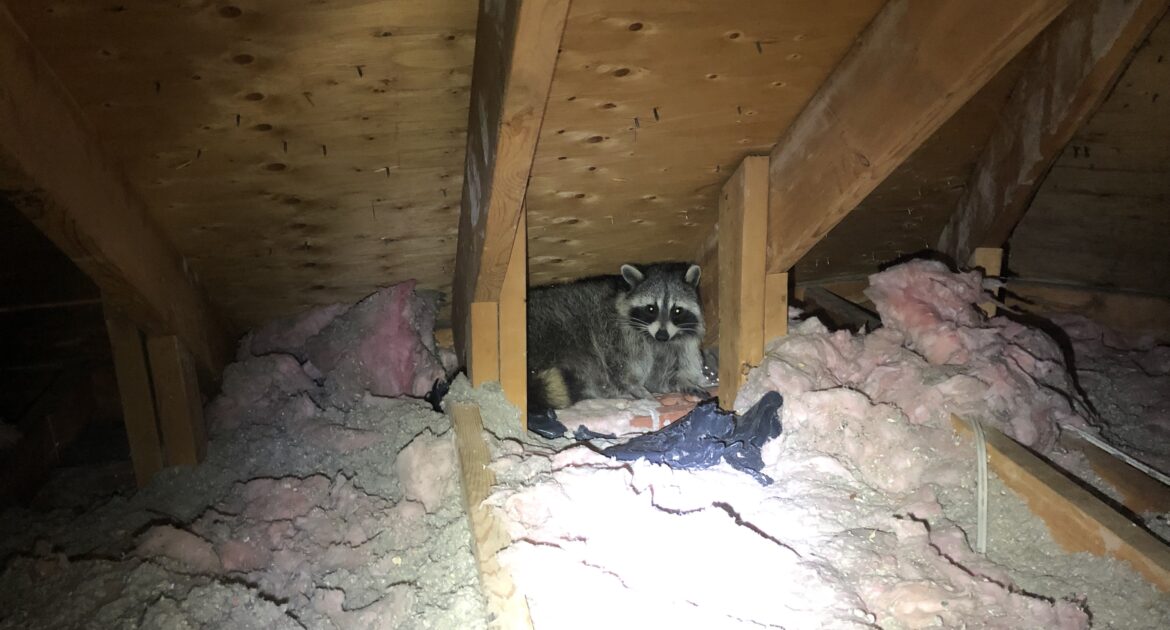If you are looking for information about how to get rid of raccoons in the backyard, you may also wonder why they have chosen to live in your house or yard in the first place. As human developments have encroached upon wild places, animals such as raccoons have experienced habitat loss. Fortunately for the raccoons, they are intelligent creatures that are able to adapt quickly to new situations. As a result, many raccoons have learned to survive and thrive living in close proximity to humans.
Why Do Raccoons Make Dens in Attics?
Raccoon mating season takes place in late winter. By spring, female raccoons are looking for safe places to make dens in which to raise their babies. Instinct drives them to look for den sites up in trees so the babies will be safe from predators.
Your attic is similar in many respects to the tree dens that female raccoons find for their offspring. In some respects, the attic is an improvement. It offers even better protection from predators than a tree. The temperature remains fairly consistent to keep the babies warm. There is even nesting material already available in the form of insulation. Humans rarely visit an unfinished attic, so the raccoons have privacy, and it may be a while until you realize they are up there.
Why Do Raccoons Eat Out of Garbage Cans?
Raccoons are opportunistic feeders; they don’t know when or where their next meal is coming from, so they eat whatever they can find that is edible. They have a sensitive olfactory sense that they use to find food, and the strong smell of decaying garbage often leads them right to it.
Raccoons also don’t like to work hard to find food. Once they find a reliable food source, they like to find a home nearby so they can take full advantage of it. When you put out your garbage, it’s like a weekly feast for a raccoon, and they don’t want to miss out on it.
Studies have suggested that some raccoons may actually prefer to eat human garbage over their natural sources of food. However, it does not offer raccoons the proper nutrients they need to stay healthy.

How Do Raccoons Get Into Trash Cans and Attics?
Raccoons have five long, nimble toes on each of their front paws. They do not have opposable thumbs as humans and apes do, but their paws are nevertheless strong and dextrous. As a result, raccoons are able to manipulate objects such as garbage can lids. They are good at problem-solving and can be very persistent if the reward seems worthwhile.
Raccoons can also use their strong front paws to manipulate vulnerabilities in your home’s exterior to make their way into your attic. They have been known to rip apart roof fascia, soffits, and shingles.
Are Raccoons Dangerous?
Raccoons do not pick fights with other creatures; they prefer to run away from danger whenever possible. However, when cornered by a human being or another potential predator, such as a dog or cat, they may bite or scratch in self-defence. This can cause significant injuries and can potentially expose you or your pets to rabies. If injured by a raccoon, it is important to seek medical attention for yourself or your pet right away. Raccoons can also carry and spread diseases to pets that do not affect humans, such as distemper. Humans and pets are also in danger of indirect exposure to diseases and parasites through contact with raccoon feces.
How Does Skedaddle Humane Wildlife Control in Markham Help With Raccoons?
Our technicians are trained to remove raccoons safely from your home, including both adults and babies. We seal off entry points so they don’t get back in, and clean up their feces after they are gone to protect you from diseases. Consider us as the answer to the question, “Who provides wildlife removal near me?”




